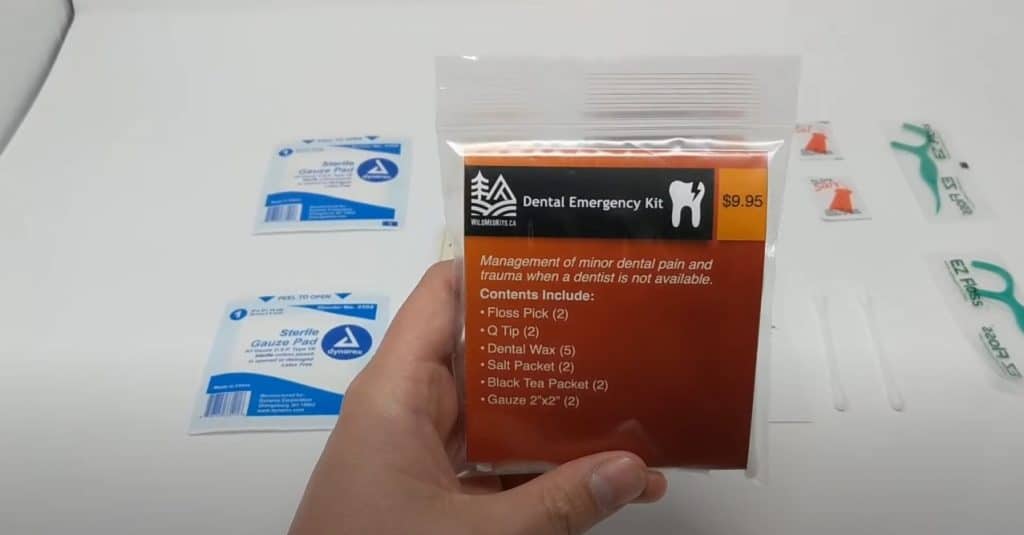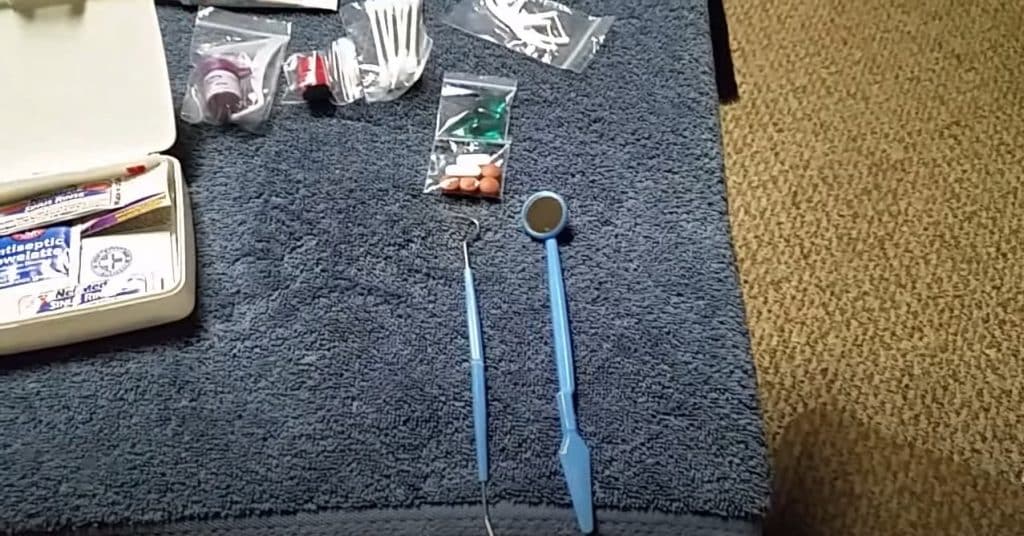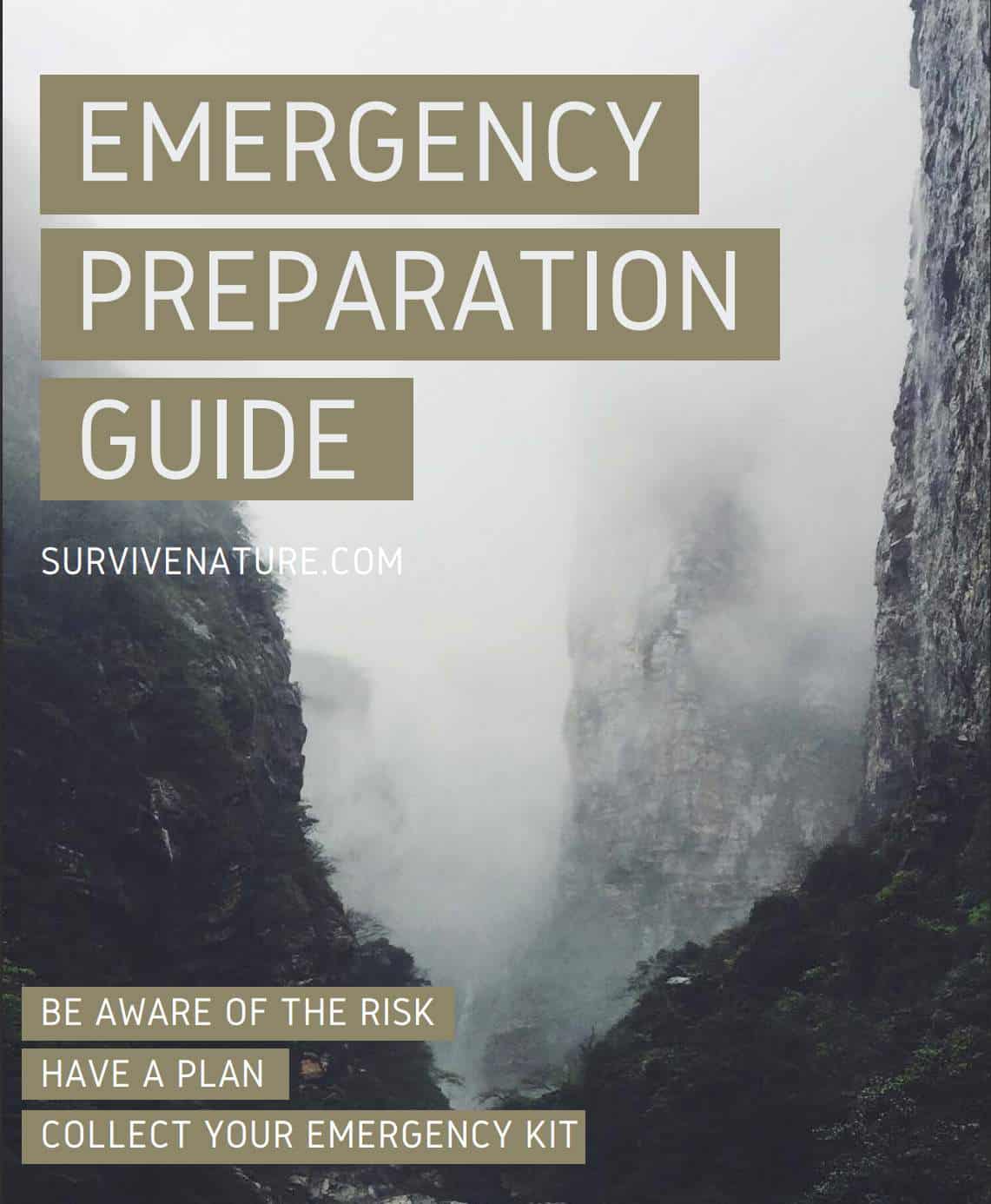If you find yourself on this page in 2023, the chances are that you are a responsible survivor who wants to obtain relevant knowledge about what can be done in the case of a “tooth emergency”. Under such an emergency, people usually understand teeth breaking or losing those. Thus, if you want to overcome such difficulty avoiding excess stress, you have to be well prepared.
If you are camping, say, somewhere in the woods or in the mountains, and a dental emergency occurs, you will probably not find any dental offices here to receive help. If you are lucky enough and there will be a person with medical education somewhere close to you, he or she will provide you with primary help with dental issues, and it will bring you temporary relief, but in the case of bad luck, you will have to be solving the problem on your own. For such situations, every true prepper has to have an emergency dental kit.
In this article, we will discuss what people mean under dental kits, what they usually put inside, and for which purposes they do so.
What Is a Dental Emergency Kit?

The main advantage, shared by both first aid and emergency dental kits, is that they both suggest easy access — once purchased, they can be taken with you on a hike: the “supplies”, put inside these bags, are frequently light in weight and easily “movable”. It is not complicated to put such a kit inside the main bag and carry it with you during the entire event.
However, if we talk about these above-mentioned “supplies”, we have to admit — the filling of these kits is not the same. Let us now get closely acquainted with the “content list” of basic emergency dental kits.
The Filling Of Kits For Dental Emergencies

You might simply not have the opportunity to visit the dentist on the same day. But it does not mean you have to suffer and “survive” these painful hours — proper training (basically, instructions), and a domestic dental kit will provide you with some basic “dental care” to overcome difficulties.
Now, we can take a closer look at the components each dental emergency kit has to include.
Gloves
Even in professional dental practice, gloves play a highly significant role. Your mouth is a sensitive place, especially when it comes to teeth-related problems. Using fingers without sterile protection might cause infections, some of which sometimes lead to tooth loss. Thus, if your dental emergency kit still lacks clean sterile gloves, it is the perfect time to add those.
Storage Container
Customers often ask why they need an empty separate “bag” or “box” inside their dental emergency kits. The idea is simple — if you accidentally lose a tooth, you will need a clean container to maintain your tooth safe and secure, in good (non-broken) condition.
Clove Oil
Another essential thing that each prepper has to keep inside of the emergency dental kit is clove oil. The market nowadays suggests a huge range of similar oils, and you are free to choose the one that fits you best.
These oils are frequently used both in eliminating ordinary headaches and in the emergencies, since the goal of such a substance is to protect your mouth from infections and make the experience less painful. Each survivor is aware of the fact that, when dealing with tooth-related troubles, which sometimes occur in very unexpected conditions, such material can reduce risk of getting undesirable diseases.
Temporary Cement
One of the key “dental tools” is a substance that can cover cavities which appear when a person loses a tooth. The idea is not complicated, and you do not have to be a dentist to understand how it works: if the cavity remains empty after one loses a tooth, microorganisms receive free access to it, sometimes causing quite unpleasant consequences.
That is why people came up with temporary fillings which can substitute permanent solutions. If you are afraid of filling your cavity with the cement in the wrong way, you should carefully read the instructions on the package. This supply is one of the key components that one has to add to the emergency kit, and, luckily, it will not cost you too much money, but will protect your health for a while.
Floss
Chances are that even if you are not a prepper, you still have a floss at home. Sometimes, it replaces a toothpaste and a toothbrush, and not only replaces them, but even excels them in efficiency. Toothpaste (especially the one with baking soda) and bush are intended to elaborate pieces of food which sometimes stick between the teeth and provide fresh breath. However, every dentist will agree that a floss performs this function better.
Cotton
If the emergency you are dealing with involves blood, cotton is your number one friend. Add to both your first aid and dental kits to provide peace of mind in stressful situations. Loose cavity always bleeds, and you have to stop it somehow. Cotton materials are here for you.
Add everything: rolls, disks, buds— you will not spend much money on them, but you will make sure you will not lose too much blood, while solving the problem.
Instruments
Every dentist in his cabinet has a set of instruments that serve various functions: from eliminating caries to processing a removed tooth. But, you do not have to be a professional dentist to make sure your dental kit contains some basic instruments to primarily protect your body from pain and infections.
These instruments usually include sterile syringes, some filling instruments, a dental mirror, a dental spatula. All of them will help you see a picture clearer, properly cover the cavity, and will not take all your money from the wallet.
Instead Of The Conclusion
Regardless of what country you live in, which experience you have and how many times you managed to overcome life obstacles, anyway, you are a human, and it means that you are not protected from the emergencies.
Some emergencies are easy to deal with, some are not, but the more you are prepared for them, the better, since it increases your chances of “successful mission accomplishment”. If you want to be ready for the teeth-related troubles, you have to make sure you have at least one basic dental kit at home, and one in the car (if you have one).
A well-equipped kit can prevent long months of recovery, since many of the consequences, caused by dental problems, require weeks for fixing and healing. If you are thinking of a helpful present for someone you love, such a kit will not only cover one’s basic need for survival, but will also demonstrate that you truly care about this person.
But, of course, having a phone number of your dentist at hand is always recommended. Stay safe and healthy!
Frequently Asked Questions — FAQ
What should be in a dental first aid kit?
The idea of an emergency dental kit is that you have to be able to easily access the essential devices that will prevent you from either losing a tooth or from getting infected by any disease, which can easily flourish in the cavity, remaining empty after one loses the tooth. Experienced preppers suggest adding cotton pads and buds, temporary materials to fill in the hole, some pain relievers — these are the very basics.
What is a dental kit?
A dental kit is a set of tools and medicines to help a patient in a “teeth emergency”. A lost or broken tooth has to be processed to avoid infections or blood loss; that is why people came up with such a “temporary repair kit” — a helper that serves to prevent dentistry disasters.
How do you handle dental emergencies at home?
The easiest way is to get in the car and go to your dentist — let professionals do their job. However, when it is impossible, you should always keep a dental kit for emergencies in your house. There should be dental instruments, like a mirror or a spatula, pain relievers, cement for temporary solutions, and something with the help of which you can disinfect the wound.
Why Do You Need an Emergency Dental Kit?
A dental kit for emergency situations is a set of tools with the help of which anybody can solve the majority of tooth-related troubles anywhere: at home or while camping. Usually, you do not have to pass a special medical course to figure out how to operate with the instruments and materials, but the general advice is to get acquainted with the instructions for everything in the kit in advance.
What does the Dr. Denti first aid dental kit include?
One of the most popular options on the market is the DR Denti kit for dental issues. There are numerous videos that unpack the kit and review it — in general; customers are satisfied with the essentials it provides. Every kit includes clove oil, dental cement, a set of dental instruments, cotton buds, gloves, instructions for everything, and a couple of other helpful devices.


